“Hardy” model
After several years of crafting knives by hand, I set out to design the best knife in the world (of course! 🙂) and find a supplier for serial production of the parts. That’s how Hardy was born—a folding knife whose first version I developed back in January 2022.
Over the years, I adjusted my plans several times to adapt to production, resulting in multiple versions. I didn’t want to compromise on quality or materials, which is why Hardy features M390 steel, renowned for its exceptional edge retention. The handle scales are made of titanium.
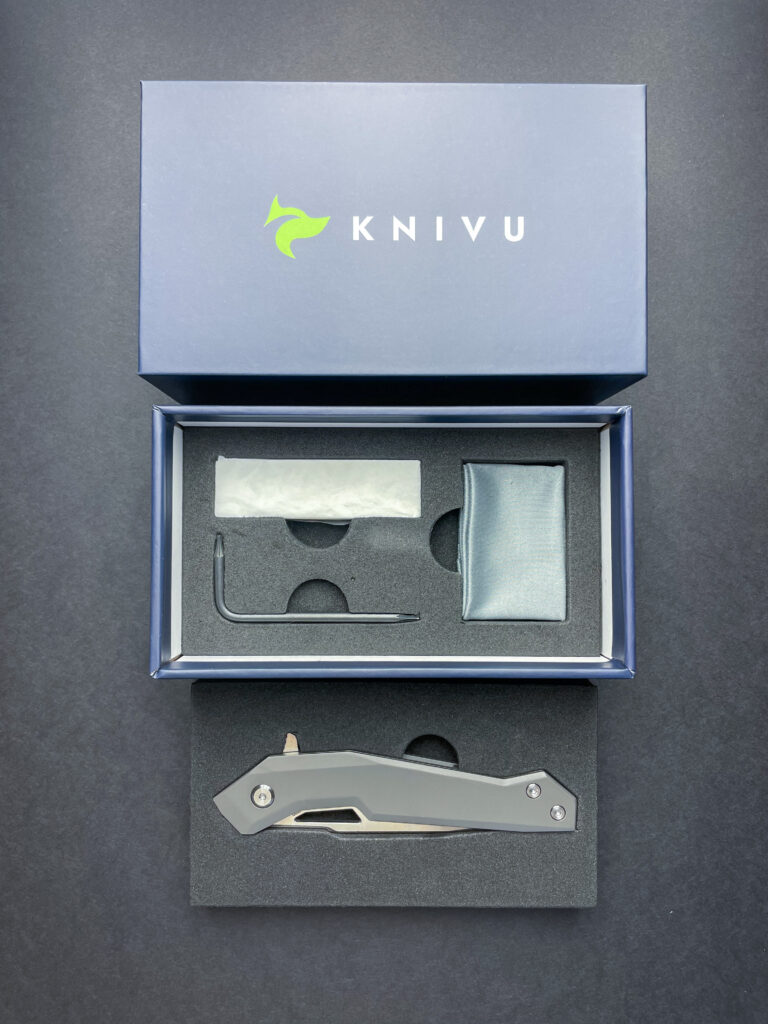
Knife Specifications
Lock Type
Linerlock
Blade
Böhler M390 MicroClean
Hardness
60-61 HRC
Scales, Clip, and Backspacer
Sandblasted Titanium, Anodized Titanium, Polished Titanium
Liners
Stainless Steel
Weight
145 g
Overall Length
206 mm
Blade Length
80 mm
Handle Length
126 mm
Width (without clip)
13 mm
Blade Thickness
3 mm
If you’re interested in the full story of Hardy, keep reading…
Development of the “Hardy” model
After years of making knives by hand, I decided in January 2022 to design a knife from the ground up and have it manufactured using CNC machining. This led to the creation of the first version of the Hardy model, initially designed with a framelock mechanism. The body was made entirely of titanium, and the blade was crafted from S35VN steel.
To test the design in real life, I first printed several prototypes using a 3D printer. Once satisfied, I began searching for a partner to manufacture the parts using CNC machining.
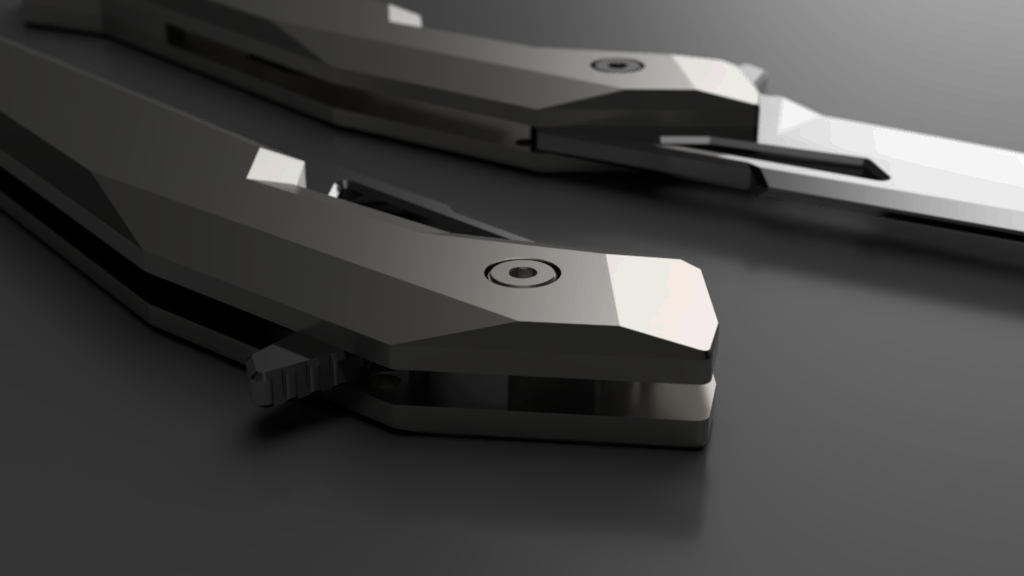

The first Hardy prototype featured a sandblasted blade, but I later abandoned this idea because the sandblasted surface easily trapped dirt and retained moisture. At the same time, I began experimenting with titanium anodization for the first time.
Anodization
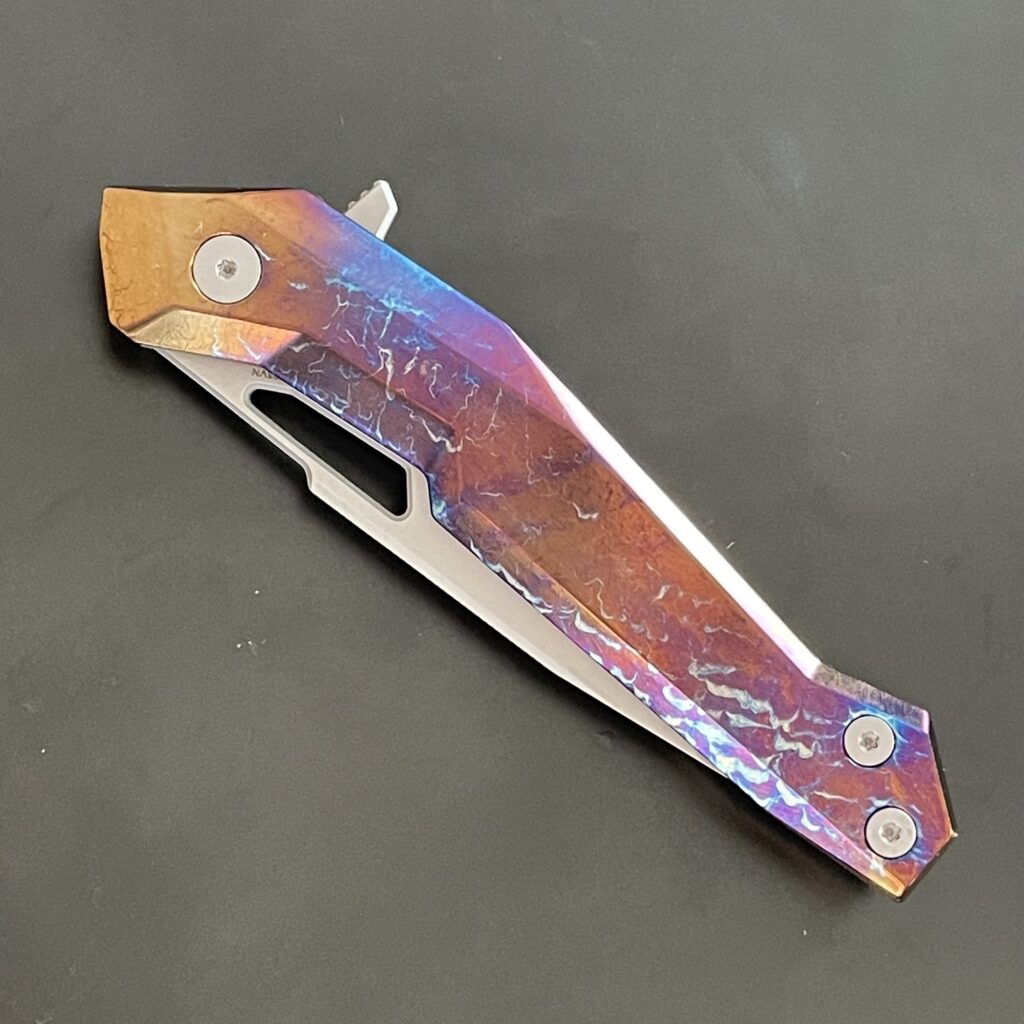
Anodization (coloring of titanium) is a controlled oxidation process that creates a thin oxide layer on the surface of the handle. This can be done either electrochemically or by heat treatment. Unlike paint, the color becomes an integral part of the material.
After extensive testing, it became clear that heat anodization is significantly more durable. Even after carrying the knife in a jeans pocket for a year, there was no visible wear. The oxidation process follows a natural progression: yellow tones appear first, followed by purple, and finally blue. The blue shades are the most durable because they result from the thickest oxide layer.
Although electrochemical anodization allows for a broader color range (such as green), the resulting layer is much thinner and wears off quickly.
Switch to Linerlock
I ultimately abandoned the framelock version because its production was too complex and costly. Instead, I redesigned the Hardy model with a linerlock mechanism and upgraded the blade material to M390—one of the best knife steels available today.
M390 steel is legendary for its ability to stay sharp even after extreme use. This exceptional edge retention was the main reason I chose it for the new Hardy version. And indeed, the knife can cut through a tin can or large amounts of cardboard and still remain sharp enough to shave hair.
Additionally, I decided to polish the handle scales to a high gloss, making them ready for anodization (custom coloring).
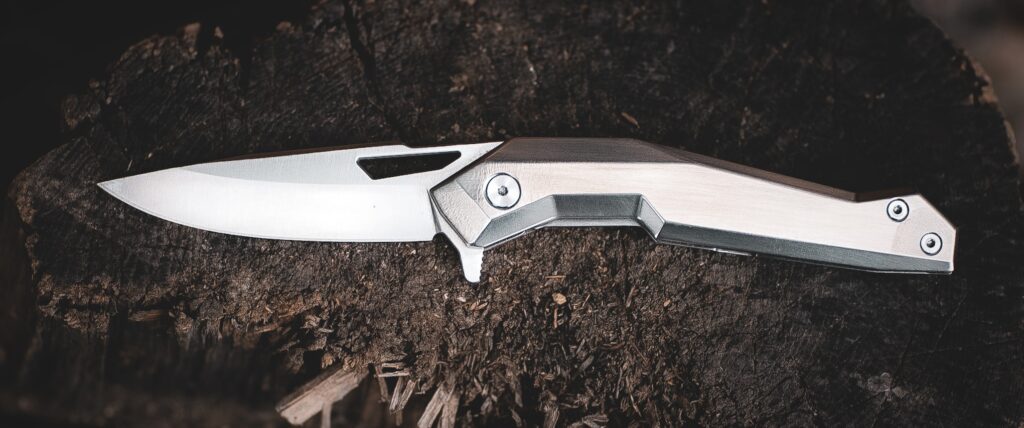
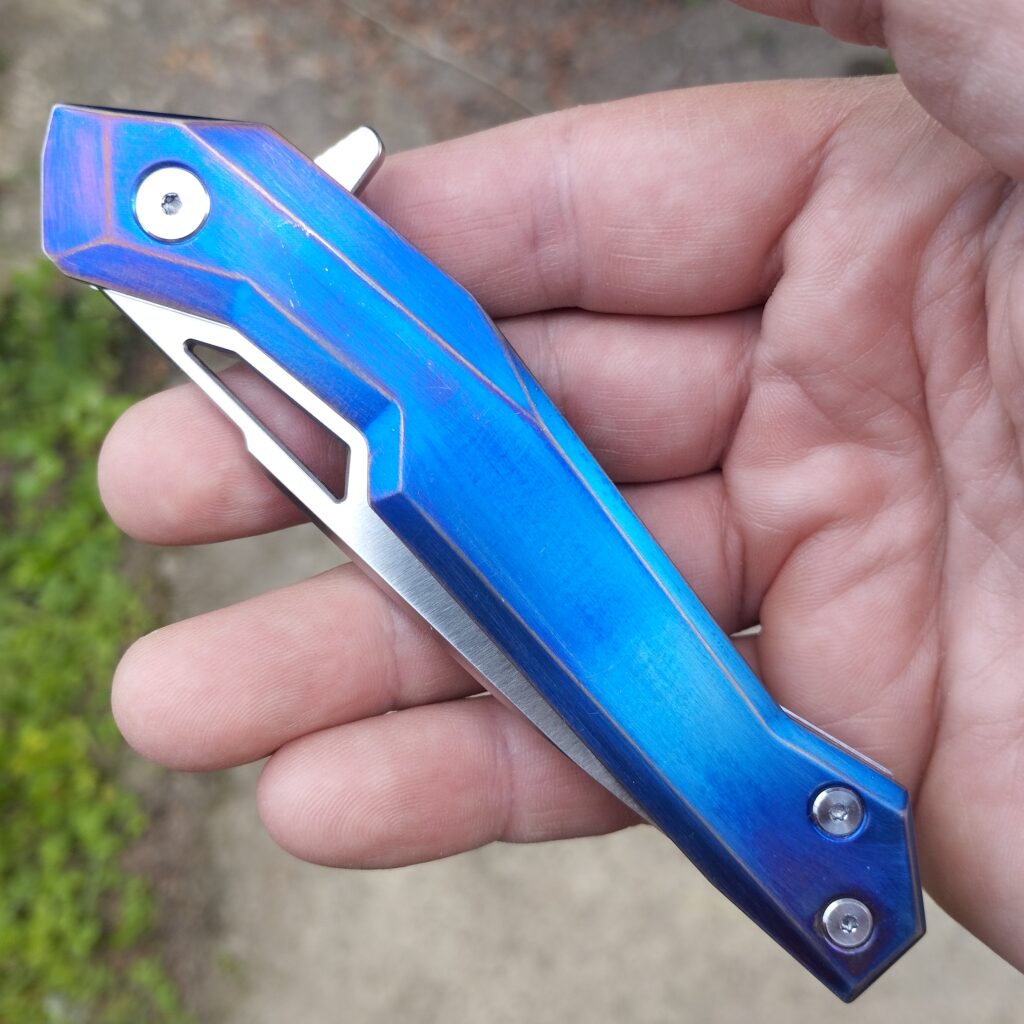
Další verze Hardyho:
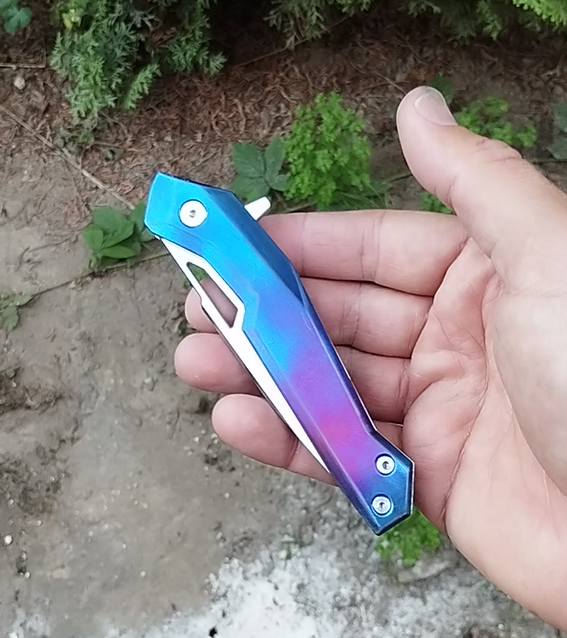
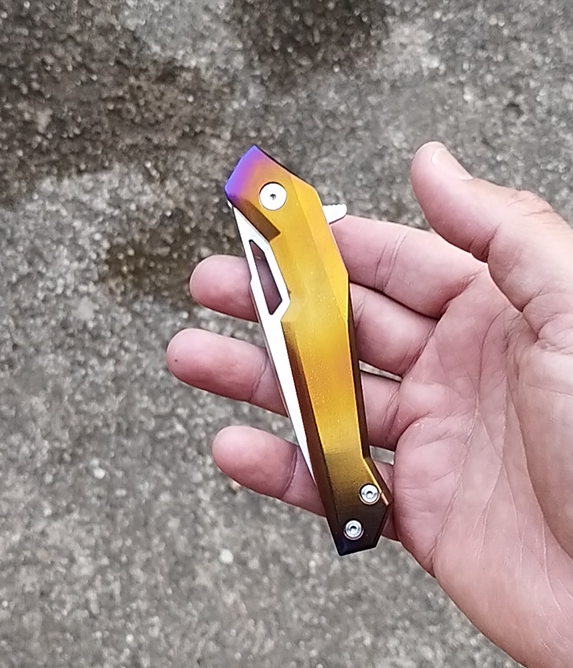

Polishing titanium while maintaining the contours of the handle scales is quite challenging. To address this, I also created a version with a sandblasted handle, offering a different aesthetic and texture while simplifying the finishing process.
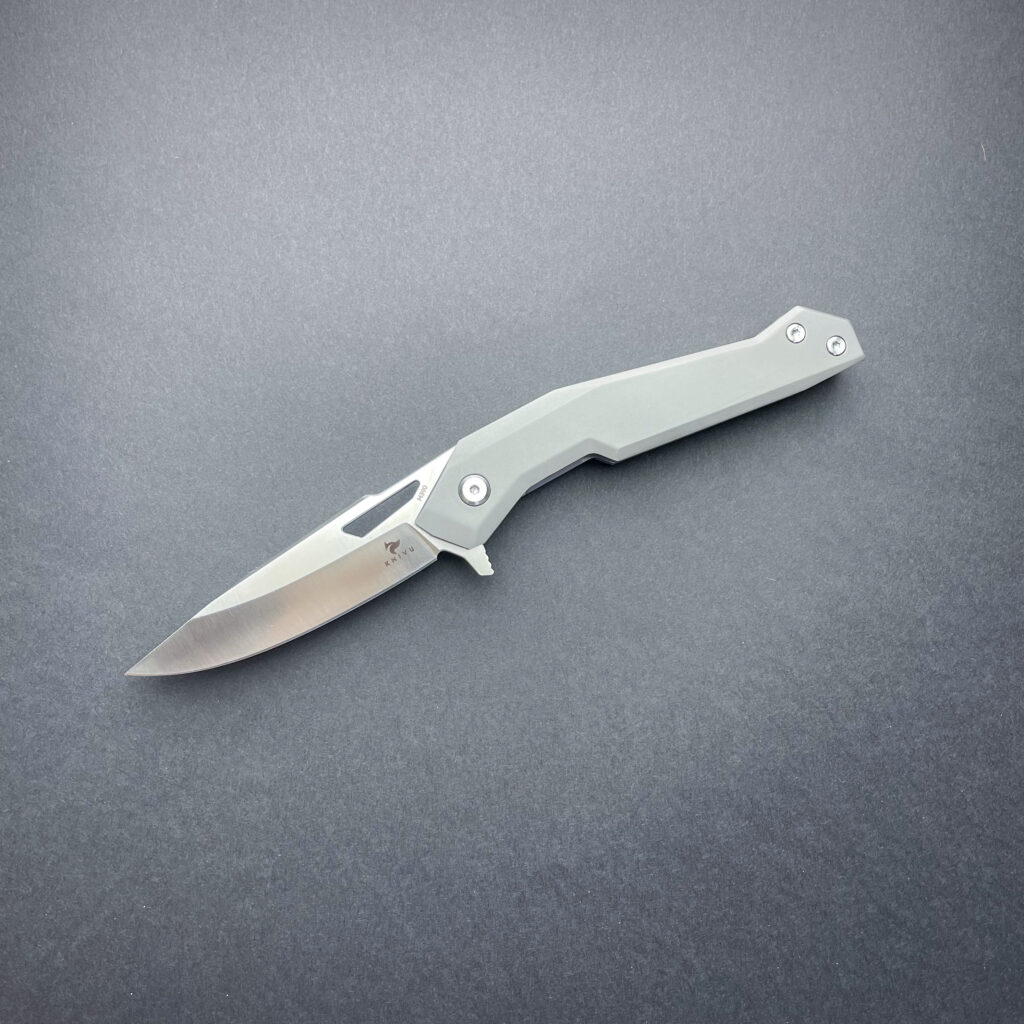
Production notes
After discovering the cost of CNC machining in Europe, I faced a tough decision: either give up or outsource production to China. In China, they use the same machines and have the same expertise as we do, but everything is five times cheaper. I chose not to give up and instead rented CNC capacity in Guangdong, China.
After about a month of working with the manufacturers, I realized why most knife production today happens entirely in China—over the years, they have mastered every aspect of the process.
Despite my satisfaction with the quality of production in China, my goal remains to manufacture everything in the Czech Republic. It’s a huge challenge, but the thought of creating a completely Czech-made knife is something that truly motivates me. However, as long as low-cost imports from China continue to flow freely into the market, achieving this dream as a Czech patriot will be an uphill battle.



